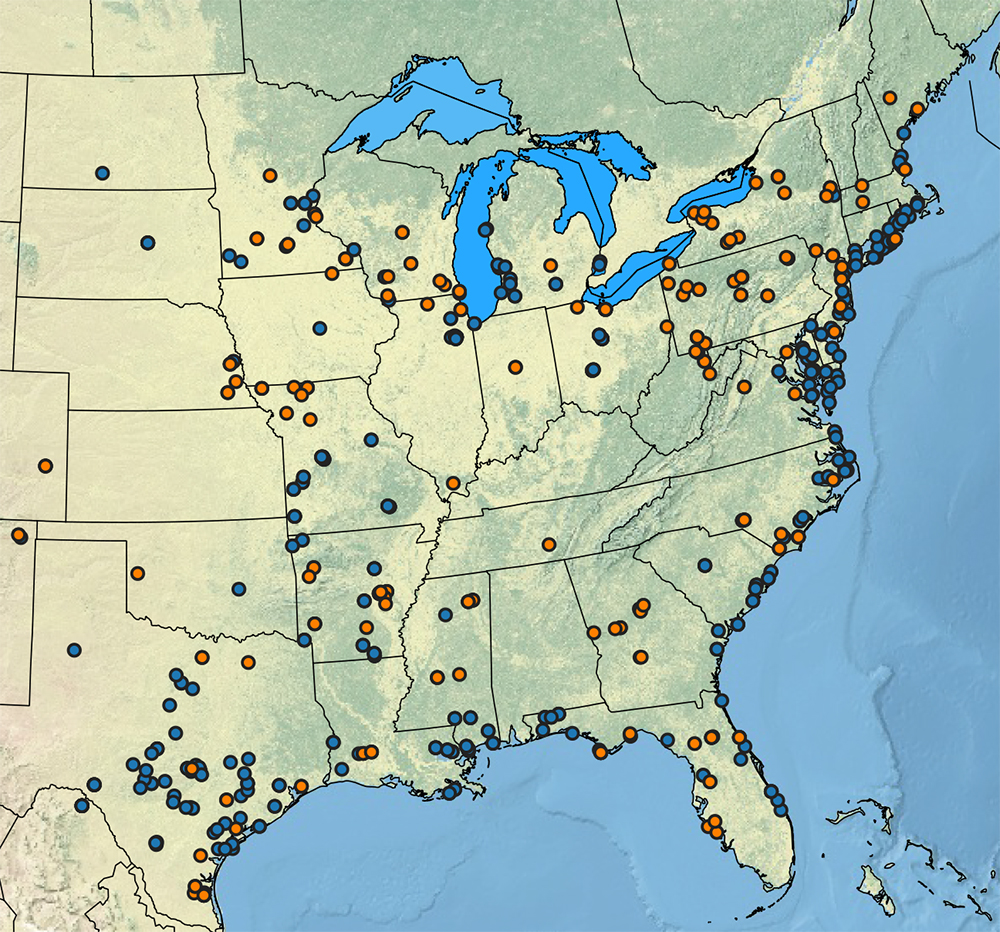Switchgrass is a native, shrubby grass that can grow year-over-year on marginal soil and with few resources. Despite the low maintenance, it can produce an impressive amount of biomass which could then be converted into sustainable biofuels. For its importance to the DOE mission, switchgrass is among the JGI Flagship Plants.
Since 2007, the JGI has been working on identifying switchgrass genes related to biomass production, drought tolerance, and other traits that make it a viable candidate bioenergy feedstock crop. In 2018, the JGI had sequenced and assembled the genomes of two varieties of a close relative and model species. The following year saw the beginnings of common switchgrass gardens to track crop productivity across 1,100 miles and eight states.
In 2021, using switchgrass samples from these gardens, a team led by researchers at the University of Texas at Austin produced a high-quality reference sequence of the complex switchgrass genome. The reference genome built off more than a decade of work; as sequencing technologies advanced, assembly and annotation of the genome sequence improved in parallel. The switchgrass genome sequence is available on the JGI plant data portal Phytozome.

: Documented occurrences of different switchgrass cytotypes (4X in blue and 8X in orange) throughout the United States. One of the early interests in exploring 8X switchgrass was because the noticeable occurrence of 8X in 4X distribution gaps. (Joseph Napier)
The combination of field data and genetic information has allowed the research team to associate climate adaptations with switchgrass biology. Switchgrass has a large polyploid genome, which means most genes are found as multiple copies across the chromosomes. In a follow-up study, researchers focused on two types of naturally occurring switchgrass, those with 4 copies of the genome (4X) and those with eight copies (8X). They found that while the 8X variety was found in multiple states and environments, the 4X variety was more of a specialist. The genetic variation that allows the 8X variety to be a generalist is a valuable resource towards the effort to generate climate resilient switchgrass.
Aside from climate-related studies, researchers have also harnessed the switchgrass gardens for other projects. At the 2021 JGI Annual Meeting, David Lowry talked about a multi-year study his student conducted involving fungal rust pathogen resistance.
Just as the common gardens have flourished, so has the community of switchgrass researchers grown. After almost two decades of research, switchgrass has become an important species whose complex genomes are helping breeders understand how they can boost crop productivity and develop additional end products. JGI-enabled research is also informing how these grasses have adapted to a range of climates and environments. The long-term investments in both the genomics and gardens are helping these shrubby grasses growing by the side of the road become a key player in biomass-based fuels.
Relevant Links:
- JGI Release: Fields of Breeders’ Dreams: A Team Effort Toward Targeted Crop Improvements
- JGI Podcast: Genome Insider S2 Episode 1: Exploring the Diversity of the American Prairie’s Switchgrass
- JGI Feature: Calculating the Costs of Multiple Switchgrass Gene Copies
- JGI Highlight: Developing Switchgrass for Biomass Production
- JGI Highlight: A Model System for Perennial Grasses
- Video: David Lowry at the 2021 JGI Annual Meeting
- Video: The Importance of Having A Switchgrass Genome
- Video: Origins of the Switchgrass Common Gardens
- Switchgrass genome v5.1 on JGI Plant Portal Phytozome